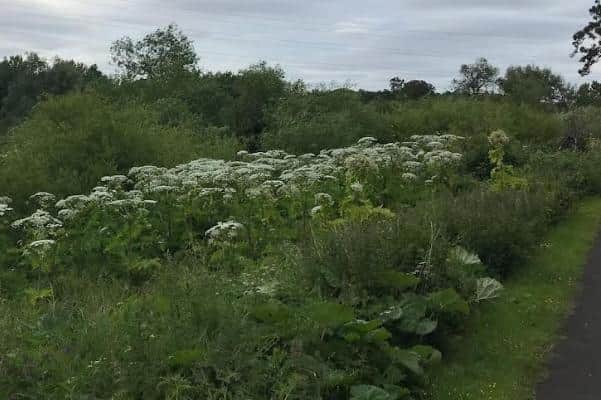Warning to Wakefield children playing out this summer over dangerous, toxic plant
and live on Freeview channel 276
The plant’s sap is extremely toxic to the skin in sunlight, making it a danger to public health, and cases are often reported in the summer holidays when young people come into contact with it.
Any part of the invasive, non-native weed, followed by exposure to sunlight, can cause severe discomfort and blistering to the skin.
Advertisement
Hide AdAdvertisement
Hide AdDr Peter Fitzsimons, Technical Manager of the Property Care Association’s Invasive Weed Control Group, said: “Each year we hear of people who are injured by Giant hogweed and quite often it is children who encounter it while out playing in the summer holidays.


“Our advice is to stay away from this plant and not allow its toxic sap to come into contact with skin in the sunlight.
“The sap can also be transferred via touch, so it can possibly affect somebody else through clothing and footwear.
“Symptoms include a rash, itching and blisters where skin comes into contact with it.
Advertisement
Hide AdAdvertisement
Hide Ad“In some cases, the blistering can be so severe that urgent medical attention is required.
“The situation is made particularly serious as this can become a long-term condition, an allergic response called ‘sensitisation,’ which can recur over a period of years, with the rash and the itching coming back every time the skin is exposed to sunlight.
“Where exposure has occurred to the skin, we recommend washing the affected area, covering it up and seeking medical advice immediately.”
Capable of reaching a height of five metres, Giant hogweed has a five to eight centimetre diameter stem and a large, white, umbrella shaped flowering head.
Advertisement
Hide AdAdvertisement
Hide AdIts leaves, which are sharply serrated or divided, can reach up to two metres in width, while the stem is usually covered in bristles and has blotchy purple markings.
The plant can be confused with UK’s native hogweed, but this plant is much smaller in size and its leaves have a smoother outline.
Dr Fitzsimons added: “Giant hogweed can spread rapidly once established in an area.
“As well as the public safety issue, Giant hogweed’s ability to spread far and wide can really impact on the ecology of an area, as it creates a dense canopy cutting off light at soil level and has no known natural pests or diseases.”
Advertisement
Hide AdAdvertisement
Hide AdPCA members can provide advice on how to identify, manage and control a number of non-native invasive species such as Giant hogweed, as well as Japanese knotweed, bamboo and others.
More details on Giant hogweed and the work of PCA members can be found here.